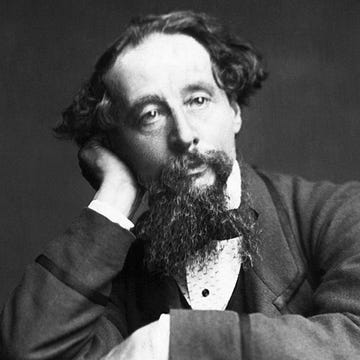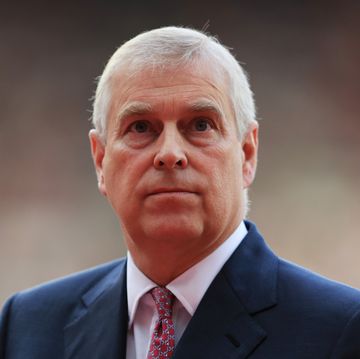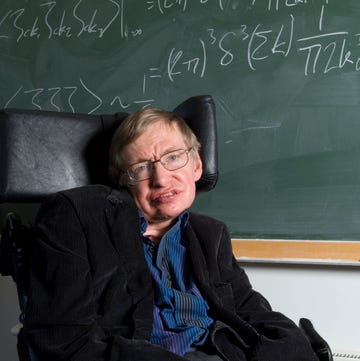1797-1851
Who Was Mary Shelley?
British author Mary Shelley wrote the classic novel Frankenstein; or, The Modern Prometheus, published in January 1818. Born in London into an influential family, Shelley had an informal education but pored over her father’s book collection and developed an interest in writing. She was only 18 when she conceptualized Frankenstein, about a scientist who creates a sentient 8-foot-tall monster out of human body parts. Literary historians credit Shelley with inventing contemporary science fiction, as she combined what was then considered factual scientific knowledge with gothic fiction. Frankenstein is still popular today, inspiring movies, plays, and Halloween costumes. Shelley, who wrote numerous other novels, was also known for her marriage to one of the most significant writers of the time, Percy Bysshe Shelley.
Quick Facts
FULL NAME: Mary Wollstonecraft Shelley
BORN: August 30, 1797
DIED: February 1, 1851
BIRTHPLACE: London, England
SPOUSE: Percy Bysshe Shelley (1816-1822)
CHILDREN: Clara, William, Clara Everina, and Percy
ASTROLOGICAL SIGN: Virgo
Early Life
Born Mary Wollstonecraft Godwin on August 30, 1797, in London, England, Shelley was the daughter of two famous philosophers and writers: William Godwin and Mary Wollstonecraft, who wrote The Vindication of the Rights of Woman (1792). Her mother died from complications of childbirth when Shelley was 11 days old, which left her father bereft.
The household also included Shelley’s older half-sister, Fanny Imlay. Imlay was Wollstonecraft’s daughter from an affair she had with an American soldier and diplomat, Gilbert Imlay. Later, when Godwin published Wollstonecraft’s letters and writing, readers were shocked by his acceptance of his wife’s relationships with other men. In 1816, Fanny Imlay died of suicide from a laudanum overdose—just one of a number of family tragedies connected to Shelley’s life.
The widower Godwin later married a neighbor, Mary Jane Clairmont. She brought her own two children into the union, and, later, she and Godwin later had a son. Shelley never got along with her stepmother.
Shelley’s education was informal, but she made great use of her father’s extensive library. Many distinguished guests visited the household during her childhood, including poets Samuel Taylor Coleridge and William Wordsworth, as well as political figures such as Aaron Burr. Shelley read often, sometimes by her mother’s grave. She also liked to daydream, escaping from her often challenging home life into her imagination.
Shelley also found a creative outlet in writing. She recalled in The Life and Letters of Mary Wollstonecraft: “As a child, I scribbled; and my favourite pastime, during the hours given me for recreation, was to ‘write stories.’’’ She published her first poem, “Mounseer Nongtongpaw,” in 1808, through her father’s publishing company, which was never profitable and the family was always deep in debt.
Frankenstein and Other Works
In 1817, Shelley published a travelogue, History of a Six Weeks’ Tour, and moved to Italy with husband Percy Bysshe Shelley.
Meanwhile, Shelley kept working on another writing project. The year prior, she and her husband were in Switzerland with her stepsister Jane Clairmont and visited Lord Byron and John Polidori, a writer. The group entertained themselves one rainy day by reading a book of ghost stories. Lord Byron suggested that they all should try their hand at crafting their own horror story.
This inspired Shelley at age 18 to begin her most famous work: Frankenstein; or, The Modern Prometheus. Now known simply as Frankenstein, the novel—about a scientist who creates a sentient creature out of human body parts—debuted in 1818 under anonymous authorship. Many readers falsely assumed her husband, who penned the introduction, was the writer.
Through the years, Frankenstein became a popular misnomer identifying the creature. The “Frankenstein” of the novel actually refers to the doctor who creates the monster. In the original version, the monster frightens those around him and is heartbroken because he can’t find acceptance or love. This inspires him to seeks revenge against Dr. Frankenstein.
In any case, the book was an immediate success and became highly influential to the horror genre.
Shelley wrote several more novels, including Valperga (1823) and the science fiction tale The Last Man (1826). The latter is a dystopian tale about the only man to survive a horrifying 21st century plague. Because of Shelley’s continued influence on literature, scholars have begun examining her other novels, including Lodore (1835) and Falkner (1837).
Shelley also wrote more travel diaries, including Rambles in Germany and Italy, and magazine articles. Like her parents, she was politically radical—even clashing with her father and husband through some of her writings. She believed qualities often attributed to women, such as cooperation, were more politically important than power.
Marriage to Percy Bysshe Shelley and Children
Shelley’s works may have been shaped by tragedy in her personal life, including her tumultuous marriage to Bysshe Shelley, whom she wed in December 1816.
During the summer of 1812, a teenaged Mary went to Scotland to stay with William Baxter, an acquaintance of her father’s, and his family. There she experienced a type of domestic tranquility she had never known, and she returned to the Baxters’ home the following year.
However, back at home, Percy Bysshe Shelley, who was 21 and a member of the aristocracy, had written to Godwin to ask if he could be Godwin’s student. It may be that Godwin allowed Bysshe Shelley into his home in order to have a wealthy patron. When Mary returned home, she and Bysshe Shelley fell in love.
However, Bysshe Shelley had previously eloped and had one child with another on the way. His father had disinherited him because of the marriage. In June 1814, accompanied by her stepsister Jane, Mary ran off to Europe with Percy and quickly became pregnant. In response, Godwin did not speak to them for some time.
As Shelley and Bysshe Shelley traveled throughout Europe, they struggled financially. Mary gave birth to their first child, a girl named Clara, in February 1815. However, the child was born premature and died a few days later.
Shelley, around 18 at the time, was heartbroken. “I awoke in the night to give it suck it appeared to be sleeping so quietly that I would not awake it,” she wrote, then adding she woke up to “Find my baby dead.” In December 1816—shortly after the death of Mary’s half-sister Fanny—Bysshe Shelley’s wife also died of suicide.
While Shelley was devoted to her husband, their union was riddled with adultery and heartache. This included the death of two more children: daughter Clara Evalina, who died of dysentery in infancy, and son William, who died from malaria at age 3. The couple’s other son Percy Florence, born in 1819, was their only child to live to adulthood.
In July 1822, Bysshe Shelley died in an apparent sailing accident—though some have speculated he may have been murdered for his outspoken political beliefs. Shelley, only 24, had to support herself and her son for the rest of her life through her own writing and promotion of her husband’s work.
Later Years and Death
Shelley became the victim of two attempted blackmail schemes, but spent the final six years of her life in relative tranquility. However, Shelley also experienced concerning medical symptoms for a period of 12 years, including migraine headaches, weakness, and seizures.
Shelley died at age 53 on February 1, 1851, in London of a suspected brain tumor. But according to the National Library of Medicine, scholars now suspect the most likely cause of her death was “a recurrent, finally massive stroke.” She was buried at St. Peter’s Church in Bournemouth, England, and laid to rest with the cremated remains of her late husband’s heart.
After Shelley’s death, her son Percy and daughter-in-law Jane had her parents exhumed from St. Pancras Cemetery in London (which had fallen into neglect) and reinterred beside Mary at the family’s tomb in St. Peter’s.
The site is accessible to tourists on the Bournemouth Cultural Trail, allowing modern readers to pay their respects to the literary icon.
Frankenstein Movies and Biopic
Not surprisingly, the popularity of Frankenstein became central to Shelley’s lasting legacy. Its themes—the ability of humans to create life, and the struggle between people and their living creations—still resonate.
Frankenstein’s first theatrical adaptation was in 1823, and it first became a dramatic movie in 1910. More than a century later, dozens of live-action and animated versions have appeared on stage, in film, and on TV. These include the 1931 movie Frankenstein starring Boris Karloff as the monster, the comedic Young Frankenstein (1974) directed by Mel Brooks. A staged production of the story starring Benedict Cumberbatch as Dr. Frankenstein and Jonny Lee Miller as the monster was also a hit.
Most recently in 2025, the Guillermo del Toro-directed Frankenstein premiered at the Venice International Film Festival. The movie, starring Oscar Isaac as Victor Frankenstein and Jacob Elordi as the monster, is set for wide release on Netflix starting November 7.
Meanwhile, since the 1950s, filmmakers and writers began to pay more attention to Shelley and her cultural influence. In 1986, the horror film Gothic, starring Natasha Richardson, explored the famous writing contest that helped inspire the Frankenstein story. Then, in 1994, Kenneth Branagh released Mary Shelley’s Frankenstein. In that movie, Robert DeNiro played a heartbroken and tragic monster.
In 2017, Elle Fanning portrayed the author in the biopic Mary Shelley, detailing her relationship with Bysshe Shelley.
Quotes
- As a child, I scribbled; and my favourite pastime, during the hours given me for recreation, was to ‘write stories.’
- I am an unfortunate and deserted creature; I look around, and I have no relation or friend upon earth.
- I beheld the wretch, the miserable monster I had created.
Fact Check: We strive for accuracy and fairness. If you see something that doesn’t look right, contact us!
The Biography.com staff is a team of people-obsessed and news-hungry editors with decades of collective experience. We have worked as daily newspaper reporters, major national magazine editors, and as editors-in-chief of regional media publications. Among our ranks are book authors and award-winning journalists. Our staff also works with freelance writers, researchers, and other contributors to produce the smart, compelling profiles and articles you see on our site. To meet the team, visit our About Us page: https://www.biography.com/about/a43602329/about-us
Since 2010, Donna Raskin, a longtime writer and editor, has taught history classes at the College of New Jersey. As a child, she read and re-read every book in the Childhood of Famous Americans series. As an adult, she collects fashion history books and has traveled to Paris on a fashion history tour. In addition to contributing to Biography.com, she is the senior health and fitness editor at Bicycling and Runner’s World.















